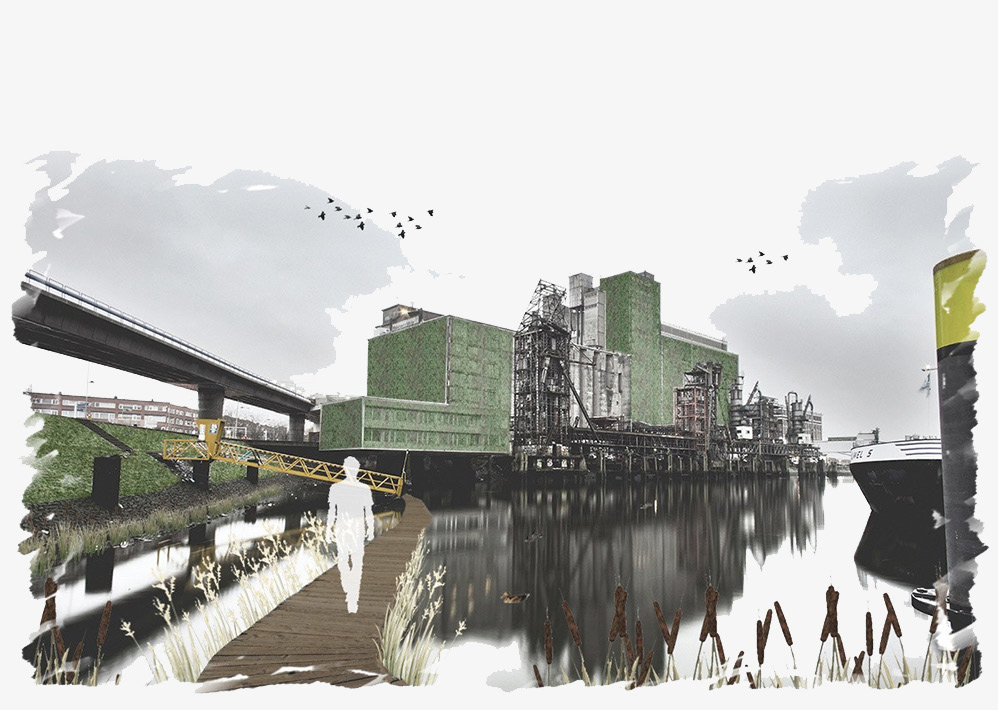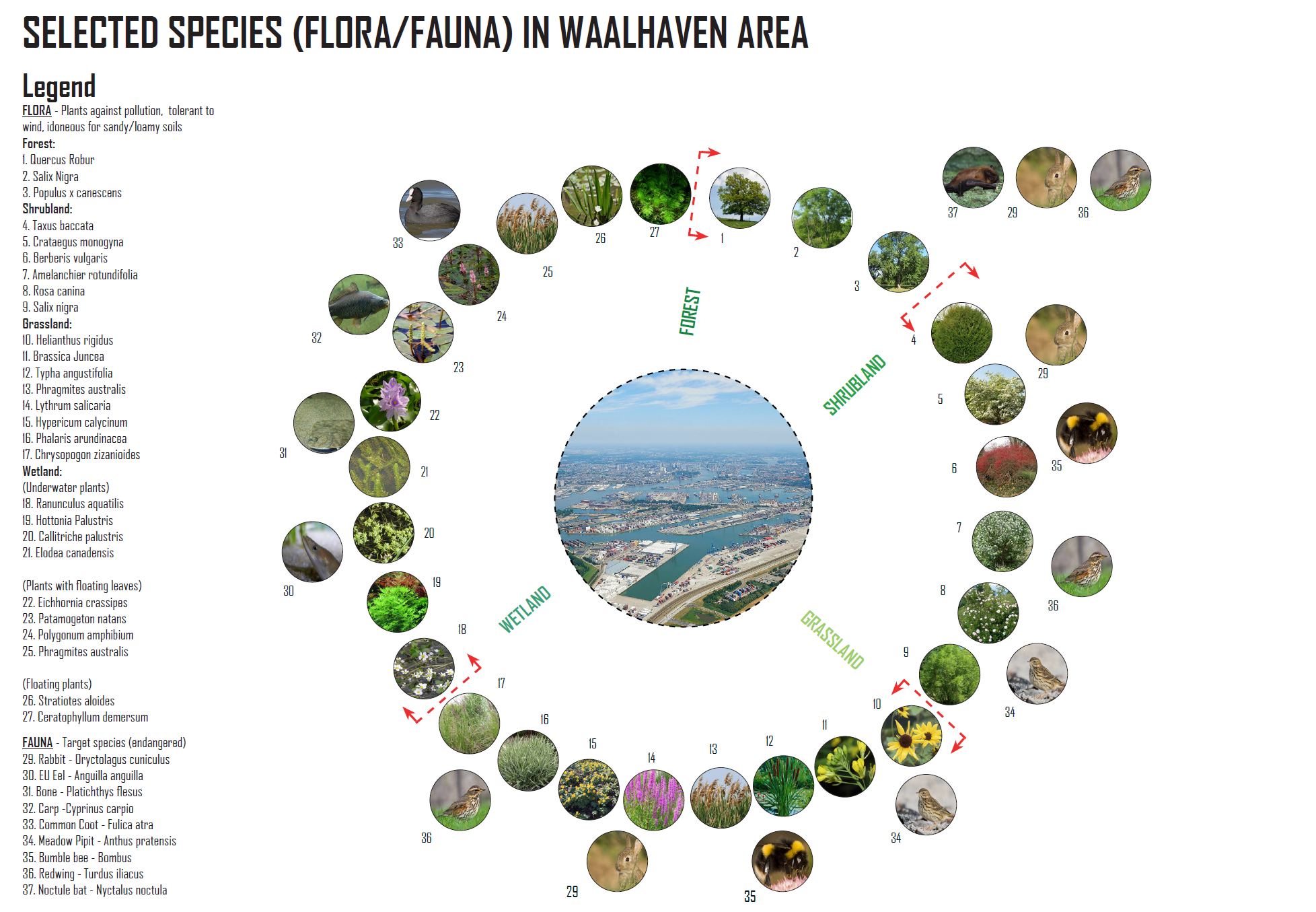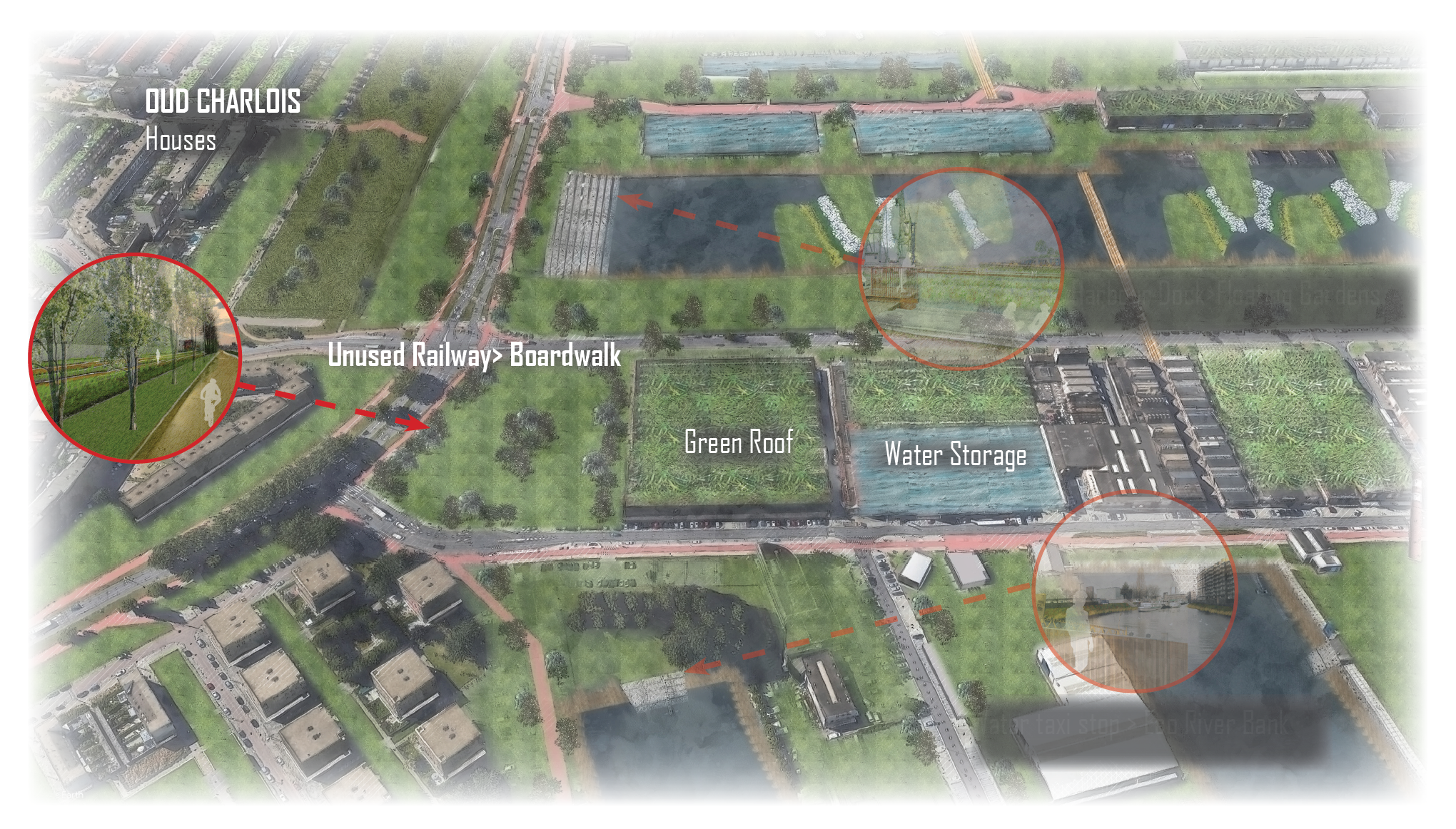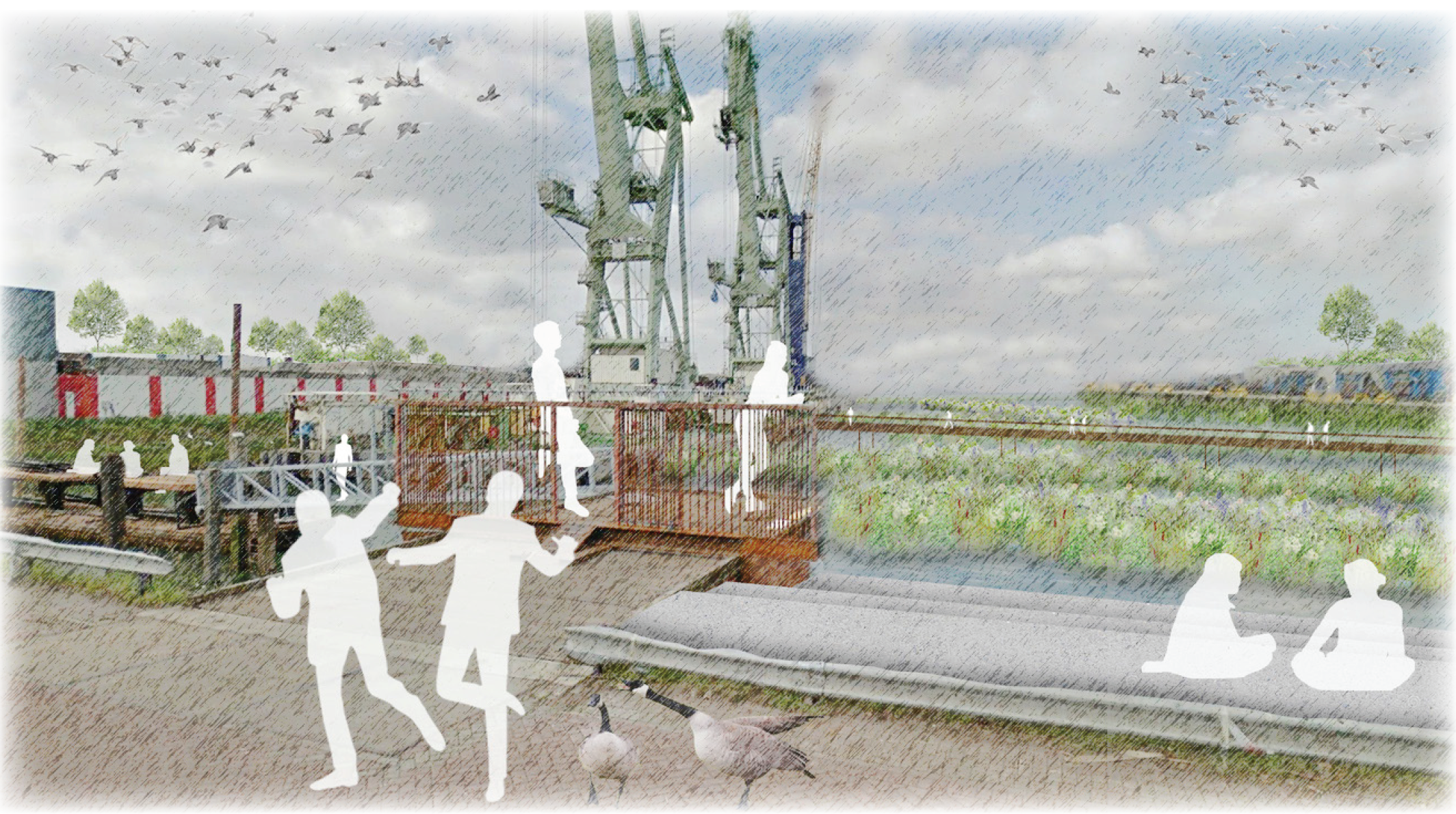An Eco Synergist Hub In Rotterdam: Reuse and Regeneration of neglected urban fragments into Ecological Hotspots
Student: Francesca Mazza
Mentors: Nico Tilie, Arjan van Timmeren, Libera Amenta
Program: MSc Urbanism
Graduation date: 2021-06-21
Abstract
This paper focuses on the regeneration and reuse of remnant wasted structures, lands in Rotterdam into future ecological hotspots to foster biodiversity, improve the quality of people and species’ lives. Due to a phenomena of pressing urbanization undergoing in the city, the majority of the old industrial, harbour areas or structures are demolished and replaced by new ones with different functions and forms so that the memory of the past urban structures gets erased. Some lands instead are used and then abandoned or even never used and left uncultivated. These, usually covered by wild vegetation, can host a high range of biodiversity, especially in not polluted soils. So what is the future of the Wastescapes in the city of Rotterdam? The reuse and regeneration of abandoned spaces in the city can offer great potential for urban biodiversity and also for the improvement of socialization. For example, a wasted space can also be converted into a community garden where people can meet up and explore nature. The sense of belonging to a place is fundamental and it can be discovered again via urban landscape design. Any space can represent a point of integration and be perceived with its own identity. Citizens should be led to understand that a space can represent a place of sensorial and mental experience. At large scale, the transformation of four critical industrial areas along the River Maas into new ecological hotspots leads to the increase of urban vegetation (biodiversity), the depollution of the soil, water and air. At medium scale, a Southern area of intervention is chosen : Waalhaven and surroundings. This represents a crucial crossing point where the contrast between city and harbour/industry is much stronger and more evident . At small scale, the district of Oud Charlois is chosen as an experimental area to intervene and test the success or failure of the intervention. The design framework applied to the project site represents a resilient, efficient, sustainable, circular system that can adequately show the potential of Wastescapes in the city in urban, social and ecological terms. This consists in the selection of particular zones of intervention where various design eco-components are applied according to duration, scale, site issue. This “Toolbox” represents a set of flexible urban elements capable of promoting biodiversity, addressing climate change and easing urban fragmentations. In particular, the quality of people and species’ life is improved by some processes of phytoremediation of polluted soils which, combined with plant gradients, can lead to the improvement and enjoyment of the urban environment (water, soil, air).
Subject
Wastescape
Reuse
Regeneration
Circularity
Sustainability
Identity






